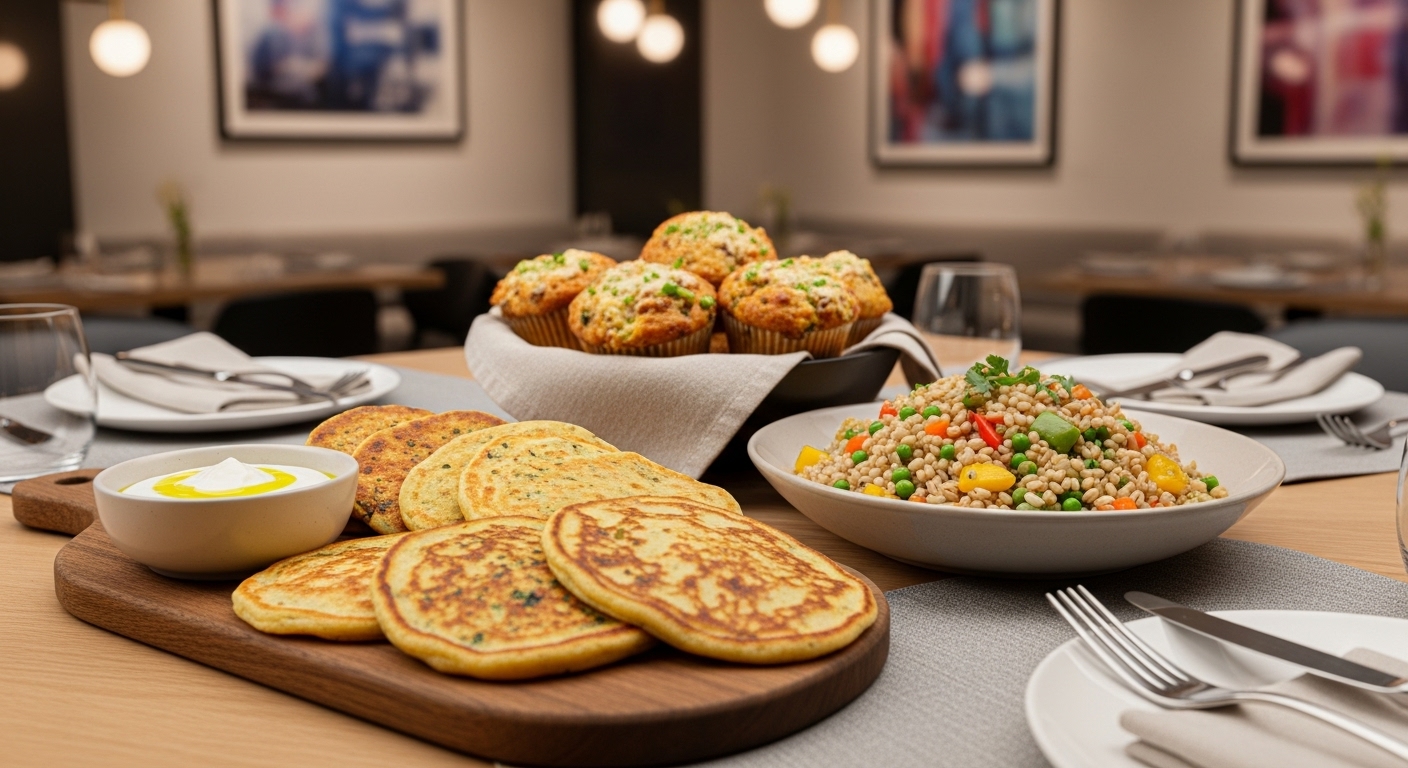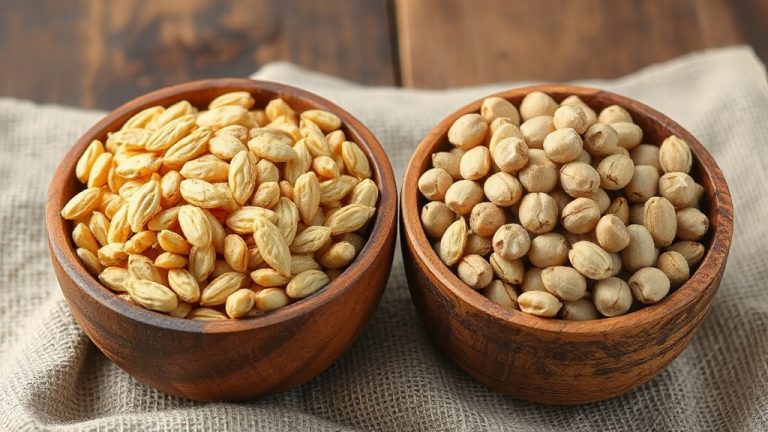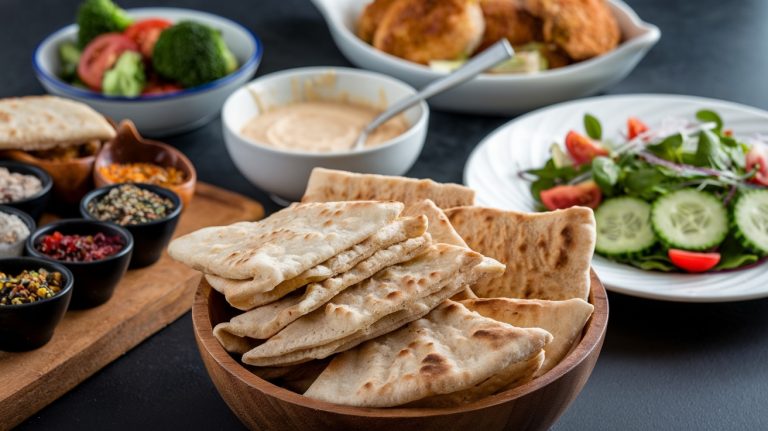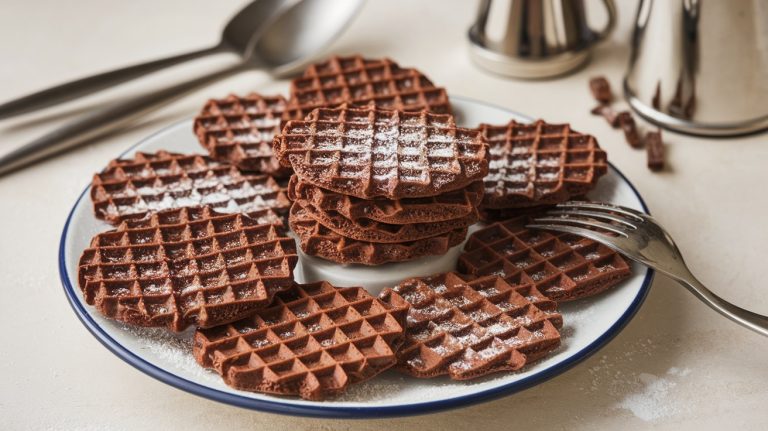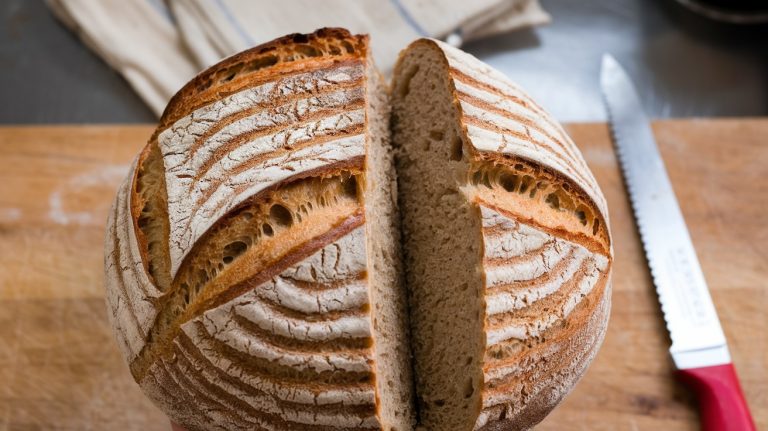Barley Flour Recipes, Tips, and Secrets for Perfect Bakes
You can transform your baking with barley flour’s nutty flavor and rich nutrition. Try blending it 50:50 with wheat for softer bread or adding oats and coconut sugar for sweet, denser cookies.
Barley works great in savory muffins with herbs or hearty flatbreads paired with garlic and spices. Keep the dough moist and handle gently for the best texture.
Ready to explore more tips, recipes, and storage tricks to elevate your barley flour creations?
Key Takeaways
- Use barley flour in combination with wheat flour for softer, well-risen breads with a nutty flavor and improved texture.
- Incorporate barley flour in dense cookies or cakes combined with oats, berries, or cocoa for moist, flavorful desserts.
- Create savory muffins or flatbreads using barley flour with herbs, Parmesan, and spices for moist, wholesome snacks.
- Prepare barley pilaf by cooking barley flour with olive oil, broth, and vegetables for a nutritious, fiber-rich side dish.
- Utilize higher hydration and gentle handling when baking with barley flour to maintain dough elasticity and enhance crumb softness.
Recipe Table: Barley Flour Pancakes
| Ingredients | Process |
|---|---|
| 1 cup barley flour | In a large mixing bowl, sift the barley flour to remove lumps and ensure a smooth batter. |
| 1 tsp baking powder | Add baking powder to the flour and mix thoroughly. This helps the pancakes become fluffy. |
| 1/2 tsp baking soda | Mix in the baking soda to activate with the acid in the buttermilk, creating bubbles in the batter. |
| 1/4 tsp salt | Stir in the salt to enhance the flavor of the pancakes. |
| 1 tbsp raw sugar or honey (optional) | Add your preferred sweetener to lightly sweeten the batter (optional). |
| 1 large egg | Crack and beat the egg in a separate bowl, then add it to the dry ingredients. |
| 1 cup buttermilk | Pour in the buttermilk and mix gently until just combined—do not overmix, or pancakes may turn dense. |
| 1 tbsp melted butter or oil | Stir in the melted butter or oil for moisture and flavor. |
| Butter or oil for cooking | Heat a non-stick skillet or griddle over medium heat and lightly grease it with butter or oil. |
| (Optional) Fresh fruits, nuts, or spices | Add-ins like mashed bananas, blueberries, chopped walnuts, or a pinch of cinnamon can enhance flavor and texture. |
Recipe Table: Moist Barley Flour Muffins
| Ingredients | Process |
|---|---|
| 1 ½ cups barley flour | Preheat your oven to 375°F (190°C). Line a muffin tin with paper liners or lightly grease it. Sift the barley flour into a large bowl. |
| 1 tsp baking soda | Add baking soda to the bowl and mix well with the flour to ensure even distribution. |
| ½ tsp salt | Mix in the salt for flavor enhancement. |
| ½ cup brown sugar or coconut sugar | Stir in the sugar for a slightly sweet taste (adjust to preference). |
| 1 tsp cinnamon (optional) | Add cinnamon for warmth and depth of flavor (optional). |
| 1 large egg | In a separate bowl, beat the egg and set aside. |
| ½ cup plain yogurt or sour cream | Combine the egg with yogurt to add moisture and tenderness. |
| ¼ cup milk (dairy or plant-based) | Stir in the milk to help loosen the batter for easier mixing. |
| ¼ cup melted coconut oil or butter | Add melted fat for richness and a soft crumb. |
| 1 tsp vanilla extract | Mix in vanilla extract for aroma and enhanced flavor. |
| ½–1 cup add-ins (berries, apples, nuts, etc.) | Fold in your favorite add-ins like blueberries, diced apples, raisins, or walnuts for extra taste and texture. |
Baking With Barley Flour: Tips and Techniques
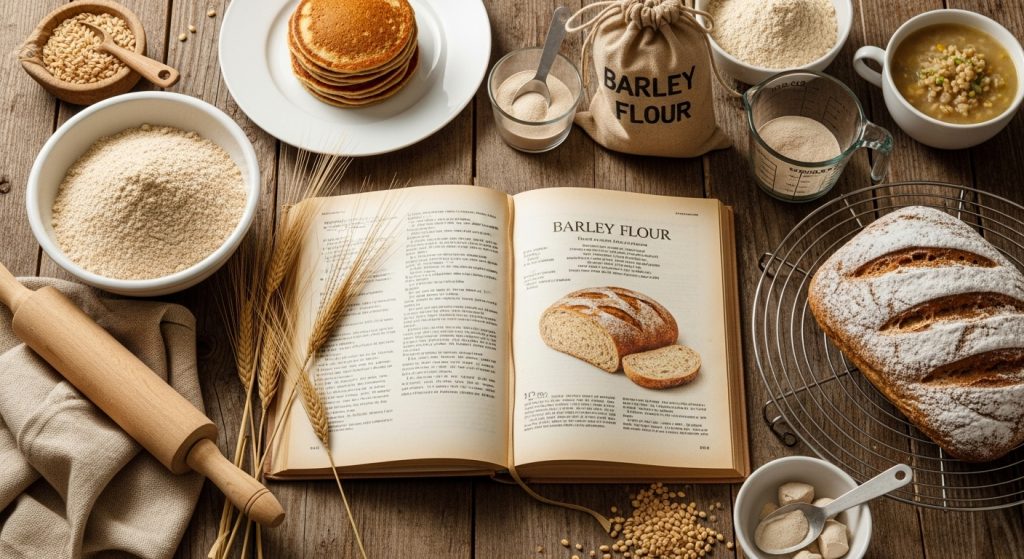
When you bake with barley flour, you’ll notice its lower gluten content changes how your dough behaves, making it less elastic and more fragile than wheat-based doughs. To get the best rise and texture, try blending barley flour 50:50 with wheat or semolina flour.
Barley was more affordable and often the only available grain during certain agricultural periods, making it essential for common families in ancient times affordable grain. Krusteaz Sourdough Bread Mix demonstrates how blends can improve texture and rise without kneading, offering a versatile baking option.
Adding eggs helps bind the dough, compensating for the reduced gluten. Handle your dough gently—skip the rolling pin to avoid crushing delicate gas bubbles; hand shaping preserves dough structure and smoothness.
Add eggs for better binding and shape dough by hand to keep it light and smooth.
Barley flour prefers higher hydration, so expect a stickier dough that needs careful mixing of wet and dry ingredients for even moisture. Proof your dough multiple times, and bake around 350°F to achieve a soft, well-risen crumb. The fermentation process, as seen in sourdough culture, can enhance flavor and texture while also benefiting health.
These tips help you master barley’s unique baking qualities.
Sweet Treats Using Barley Flour
Although barley flour’s lower gluten content can challenge traditional baking, it shines brilliantly in sweet treats, lending a distinctive nutty flavor and hearty texture. When making cookies, you can replace part of the wheat flour with barley flour to create denser, more flavorful bites.
Barley flour contains gluten but has a different gluten structure than wheat, which means some with celiac or wheat allergies may tolerate it. Using a digital baking scale can help you measure barley flour precisely for the best results.
Add oats or natural sugars like coconut sugar to boost fiber and sweetness naturally. For cakes, barley flour works wonderfully with berries or cocoa, balancing moisture and maltiness for rich, tender results.
Nordic-inspired cakes with barley flakes and malt flour offer chewy, flavorful finishes. You’ll need leavening agents like baking powder or soda to help your sweet creations rise properly.
Whether you’re baking chocolate cakes or quick snack cakes, barley flour adds nutrition and complexity without sacrificing taste.
Savory Dishes Featuring Barley Flour
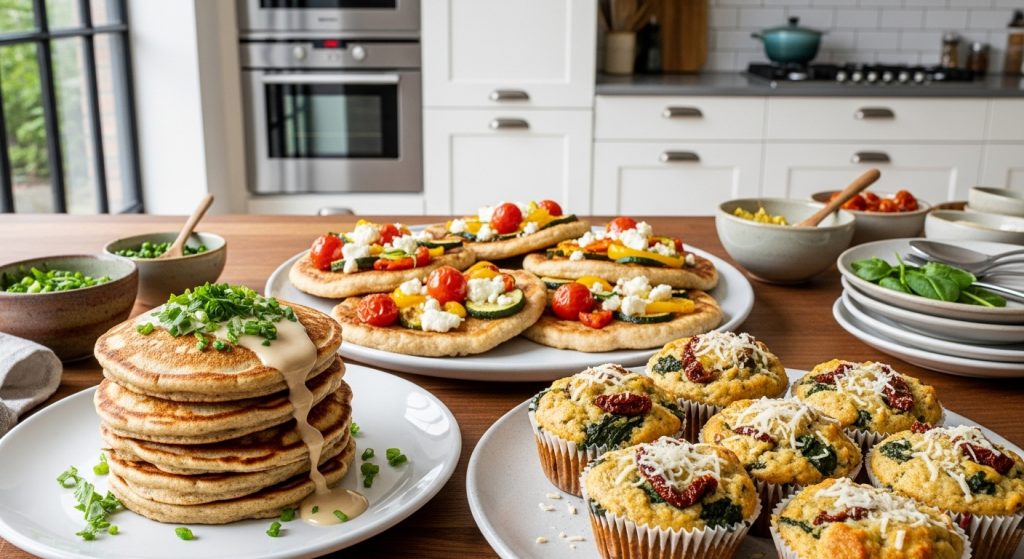
If you’re looking to add depth and nutrition to your savory meals, barley flour offers a unique and hearty option that elevates a variety of dishes. You can craft savory muffins blending barley flour with spelt, Parmesan, and fresh herbs for a moist, flavorful bite that benefits from gluten development techniques to improve texture and rise.
Barley flour’s nutty undertones also shine in flatbreads and pancakes, where it pairs beautifully with garlic, onions, and spices, creating a wholesome base for your favorite toppings. Including barley flour can contribute to better weight management, although causality is still inconclusive.
Barley flour’s nutty flavor enhances flatbreads and pancakes, perfectly complementing savory garlic, onions, and spices.
For something heartier, barley pilaf combines pearled barley cooked with olive oil, broth, and vegetables, delivering a satisfying side or main dish rich in fiber and essential nutrients.
Using barley flour in these ways boosts fiber intake while offering a lower glycemic impact, making your savory creations both delicious and healthful.
Barley Flour in Traditional and Modern Breads
Because barley flour boasts a rich nutritional profile and distinctive texture, it plays a fascinating role in both traditional and modern bread making. You’ll find traditional barley breads often dense and rustic, relying on simple mixes of barley flour, water, and salt, sometimes with yeast or sourdough.
These breads honor barley’s heritage, offering a nutty flavor and longer shelf life thanks to high fiber and antioxidants. Barley flour contains a significant amount of soluble and insoluble fibers, which contribute to its health benefits and texture in baking. In modern baking, you can experiment by partially substituting barley flour with wheat to enhance nutrition without sacrificing rise or texture.
Adding barley flour can also influence fermentation times and flavor complexity due to its effects on acetic acid-producing bacteria. Barley’s beta-glucan slows digestion, making breads heart-healthy and blood sugar-friendly. Whether crafting old-world rye-barley blends or contemporary health-focused loaves, barley flour enriches your bread with moisture, flavor, and wellness benefits.
Combining Barley Flour With Other Flours
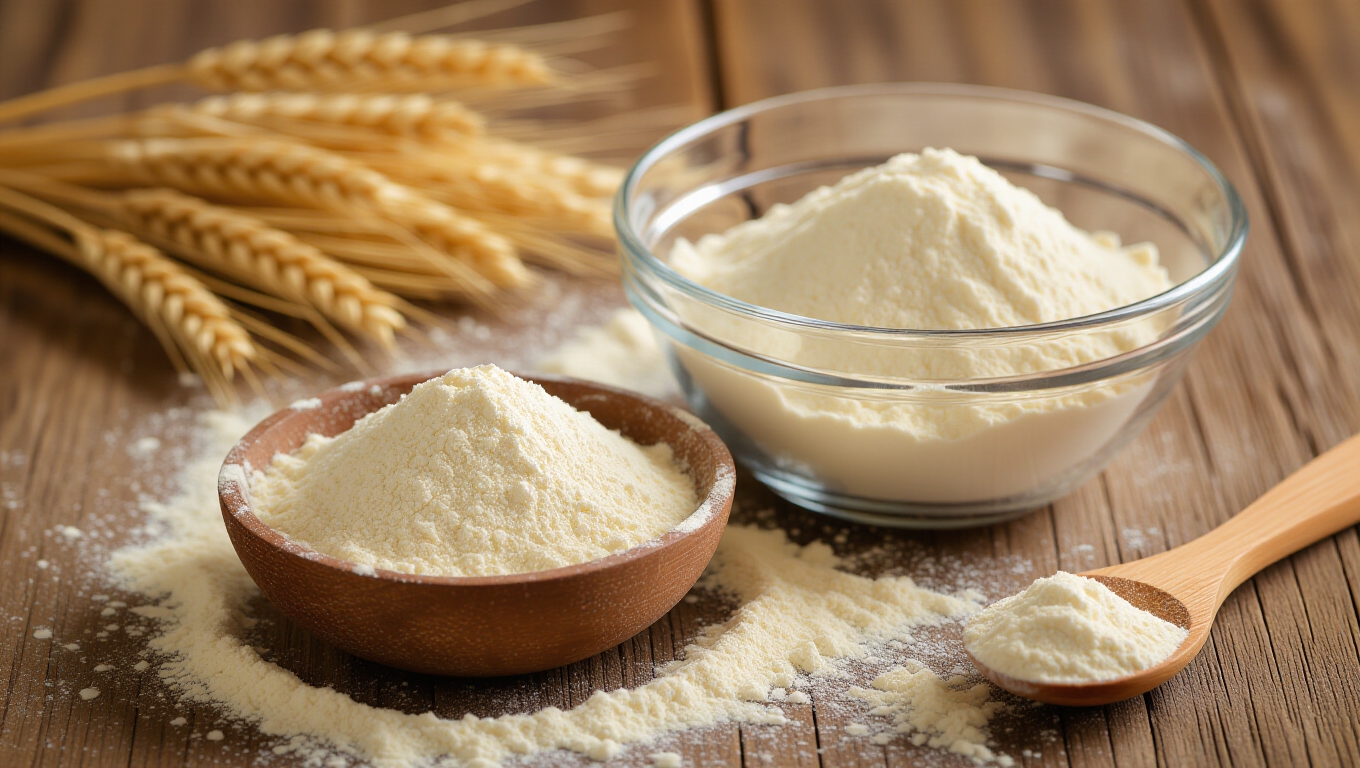
When you blend barley flour with other flours, you open a balance between nutrition, texture, and flavor that pure barley flour alone can’t deliver. Combining it with wheat flour, for instance, restores gluten structure, improving dough elasticity and rise, while enhancing fiber and adding a nutty sweetness.
Barley flour is higher in fiber compared to wheat flour, which boosts the nutritional value of your baked goods. This combination also allows for a denser texture that complements hearty bread recipes.
Start by substituting 25% barley flour in all-purpose flour for muffins or quick breads to maintain moistness and crumb. For yeast breads, a 50/50 mix with wheat flour ensures proper rise and a hearty texture.
Begin with 25% barley flour in quick breads; use 50/50 for yeast breads to balance texture and rise.
Remember to increase liquids slightly, as barley absorbs more water. Mixing flours evenly and allowing extra rising time helps prevent dense or crumbly results.
This approach lets you enjoy barley’s health benefits and rich flavor without sacrificing baking performance.
Where to Buy and Store Barley Flour?
You can find barley flour from both online retailers and local specialty mills. It is often available in convenient packages ranging from small consumer sizes to bulk bags. Available in multiple sizes, options include 2 lbs, 4 lbs, 16 lbs, 25 lbs, and 5 lbs packages to suit different needs. The quality of flour can significantly affect the microbial health when used in baking.
When choosing your flour, consider options like organic, non-GMO, or stone-ground varieties to match your baking needs.
To keep your barley flour fresh, store it in a cool, dry place in an airtight container. Freezing can even extend its shelf life up to two years. Proper storage helps maintain the flour’s ability to support a healthy microbial community during fermentation.
Retail and Online Sources
Finding high-quality barley flour has become easier as both retail and online options have expanded to meet diverse baking needs and preferences. You can find organic, stone-ground, and sprouted varieties at specialty mills, health food stores, and major retailers like Walmart.
This flour is often made from 100% whole barley flour, which preserves its nutritional benefits through a cool milling process. Many bakers appreciate barley flour for its ability to enhance bread texture and flavor, especially when used in pre-ferment recipes such as Poolish or Biga.
Online suppliers offer bulk options with detailed specs and nationwide shipping, perfect for home bakers or commercial users.
| Source Type | Highlights |
|---|---|
| Specialty Mills | Organic, whole grain, local pick-up |
| Health Food Stores | Smaller sizes, organic emphasis |
| Mainstream Retail | Packaged, organic, non-GMO |
| Online Suppliers | Bulk pricing, detailed product info |
| Wholesale | Large bags, commercial use |
Choose a source that fits your quantity needs and baking style for the freshest, highest quality barley flour.
Packaging and Quantity Options
Barley flour comes in a variety of packaging sizes and materials designed to meet the needs of everyone from home bakers to large-scale commercial producers.
You’ll find barley flour in bulk bags weighing 25 lb, 50 lb, or even 25 kg, perfect if you bake often or run a bakery. Many bakers appreciate packaging that offers easy handling and protection during storage.
Malted barley flour usually comes in 50 lb bags, while pearl barley flour is available in similar bulk sizes.
For home use, organic barley flour often comes in smaller, food-safe plastic containers, making it easy to handle.
Packaging materials like heavy-duty multi-wall paper protect the flour from moisture and contamination. Proper storage in a cool and dry environment is essential to maintain its freshness and prevent spoilage.
Choosing the right quantity and packaging helps maintain freshness and suits your baking frequency, whether you’re experimenting with a small batch or baking in bulk.
Storage Tips and Shelf Life
Although storing barley flour correctly might seem straightforward, getting it right guarantees your flour stays fresh and flavorful for as long as possible. You’ll want to keep it in a cool, dry place away from sunlight, ideally in airtight containers to maintain optimal freshness.
Here’s how to maximize freshness:
- Store unopened barley flour at room temperature, where it lasts 6 months to 1 year.
- Once opened, keep it in the pantry for up to 4 months or refrigerate/freezer for longer storage.
- Use vacuum-sealed bags or airtight containers to minimize air and moisture exposure.
- Label containers with dates to track freshness and rotate older flour first.
Because whole grain flours like barley contain oils in the bran and germ, they have a shorter shelf life and can become rancid if not stored properly, so refrigeration or freezing is recommended for extended freshness.
You can find quality barley flour at health food stores, online retailers, and farmers’ markets. Proper storage preserves taste and prevents rancidity or spoilage.
Frequently Asked Questions
Is Barley Flour Gluten-Free?
No, barley flour isn’t gluten-free. Since it’s made from barley grain, it naturally contains gluten, which means you should avoid it if you have celiac disease or gluten sensitivity.
Even different types of barley flour, like pearl or graham, carry gluten. So, if you’re aiming for gluten-free baking or cooking, barley flour won’t work for you—it’s best to stick with grains like rice or corn instead.
Can Barley Flour Be Used for Pasta Making?
You can definitely use barley flour for pasta making, but it’s best to blend it with other flours like semolina or all-purpose to improve texture and elasticity. Pure barley flour dough tends to be a bit tricky to knead and roll.
Mixing flours helps you create a dough that’s easier to handle and yields a pasta with a firm, pleasant bite. Just remember to knead well and let the dough rest before shaping.
How Does Barley Flour Affect Baking Hydration Levels?
You’ll need to increase hydration when using barley flour because it soaks up about three times its weight in water, much more than wheat flour. This means your dough will feel drier if you don’t add extra water.
Expect to raise water content above 80% to get the right dough consistency. Adjusting hydration helps improve dough stability, extensibility, and final texture.
Ensuring proper hydration is key to making baked goods that stay moist and fresh longer.
Does Barley Flour Spoil Faster Than Wheat Flour?
You should know barley flour spoils in about 3 months once opened, much faster than wheat flour’s typical 6 months. That’s because barley’s high oil content in its bran and germ speeds up rancidity, especially at room temperature.
To keep it fresh, store it airtight and chill it. Refrigeration can stretch its life up to a year, helping you avoid that unpleasant, stale taste that ruins your baking.
What Nutritional Benefits Does Barley Flour Provide?
You’ll find barley flour packed with nutrients that boost your health. It offers plenty of fiber, especially beta-glucan, which helps lower cholesterol and supports digestion.
You’ll get protein for muscle maintenance and essential vitamins like B1, B6, and minerals like magnesium and manganese. Plus, its antioxidants protect your cells.
The fiber and low glycemic index help regulate blood sugar, promote fullness, and support heart and bone health.
Barley Flour: The Secret Ingredient for Healthier, Tastier Bakes
You’ll find that baking with barley flour brings richness, texture, and a subtle nutty flavor to your kitchen creations. You’ll enjoy experimenting with sweet treats, you’ll savor crafting savory dishes, and you’ll appreciate blending barley flour with other flours to elevate your breads.
Whether you’re a seasoned baker or just starting out, embracing barley flour means embracing health, taste, and tradition—all in one wholesome, versatile ingredient. Keep baking, keep exploring, and keep enjoying.

